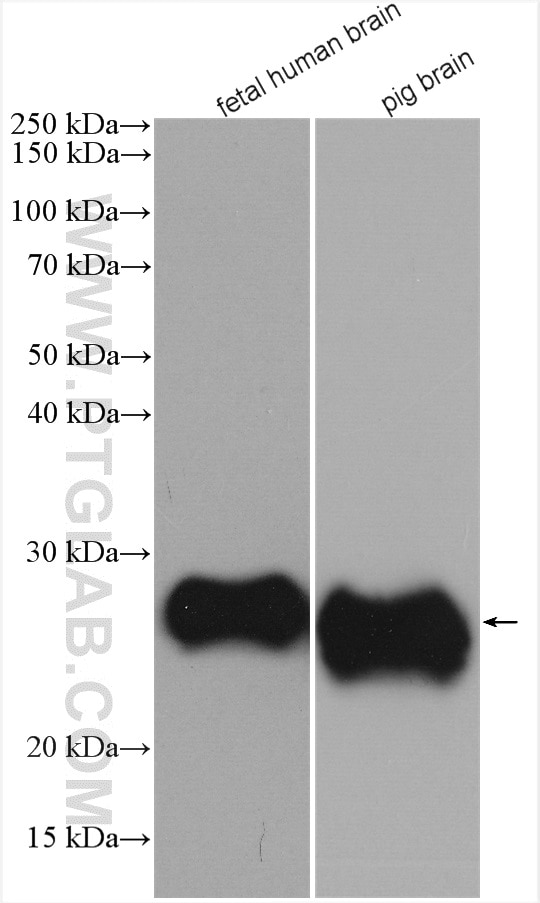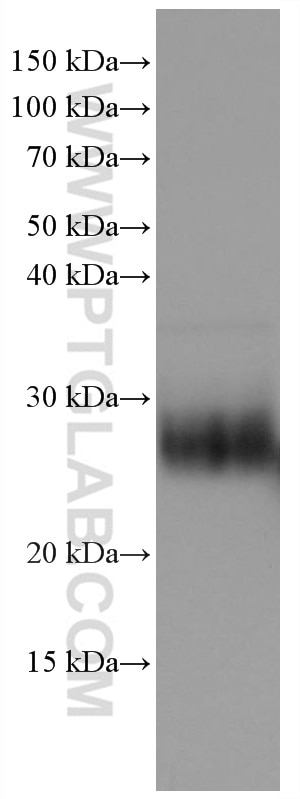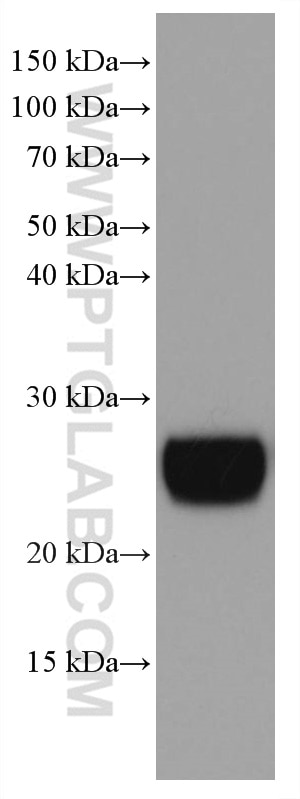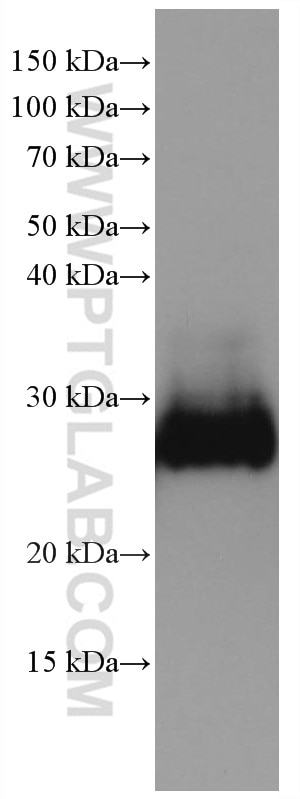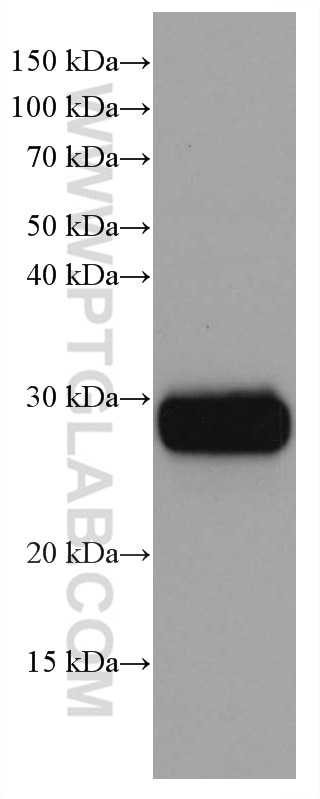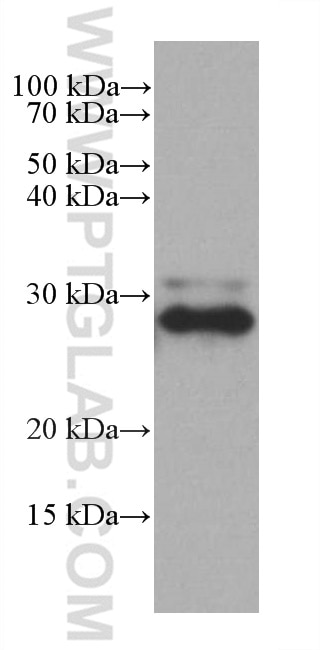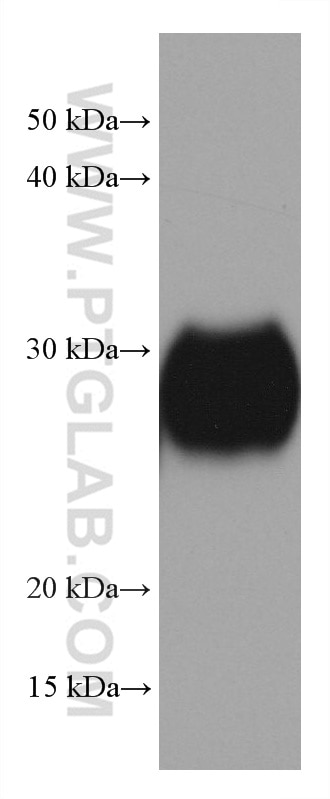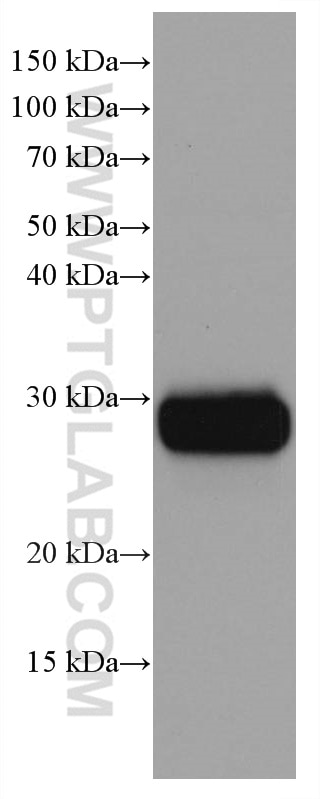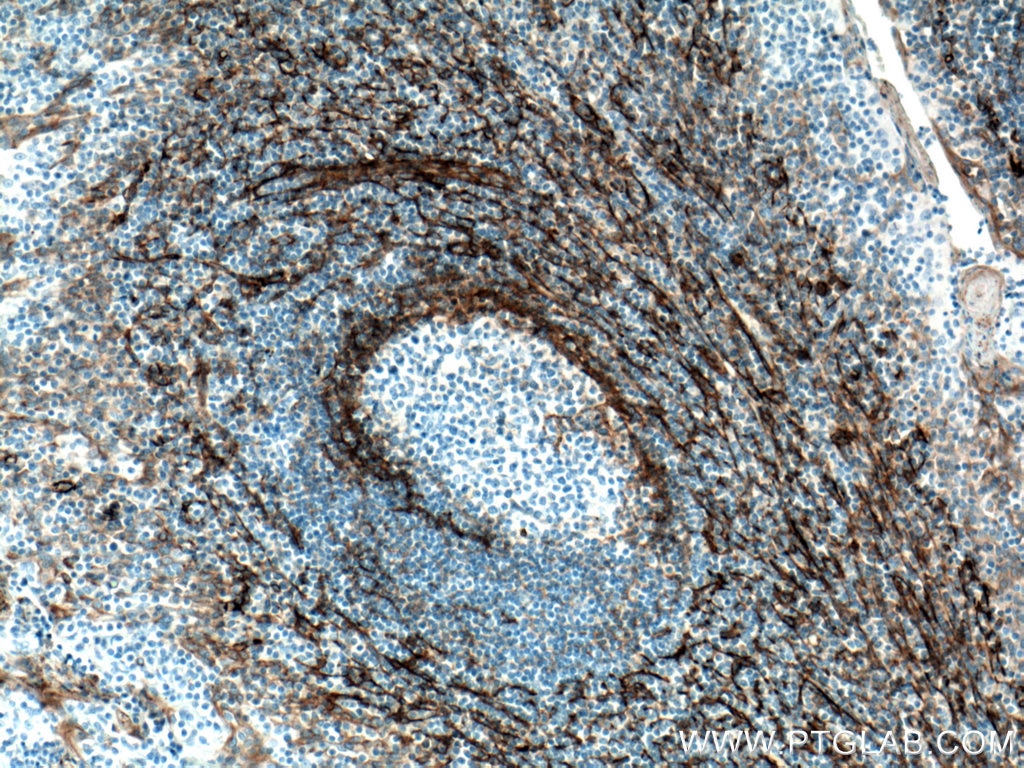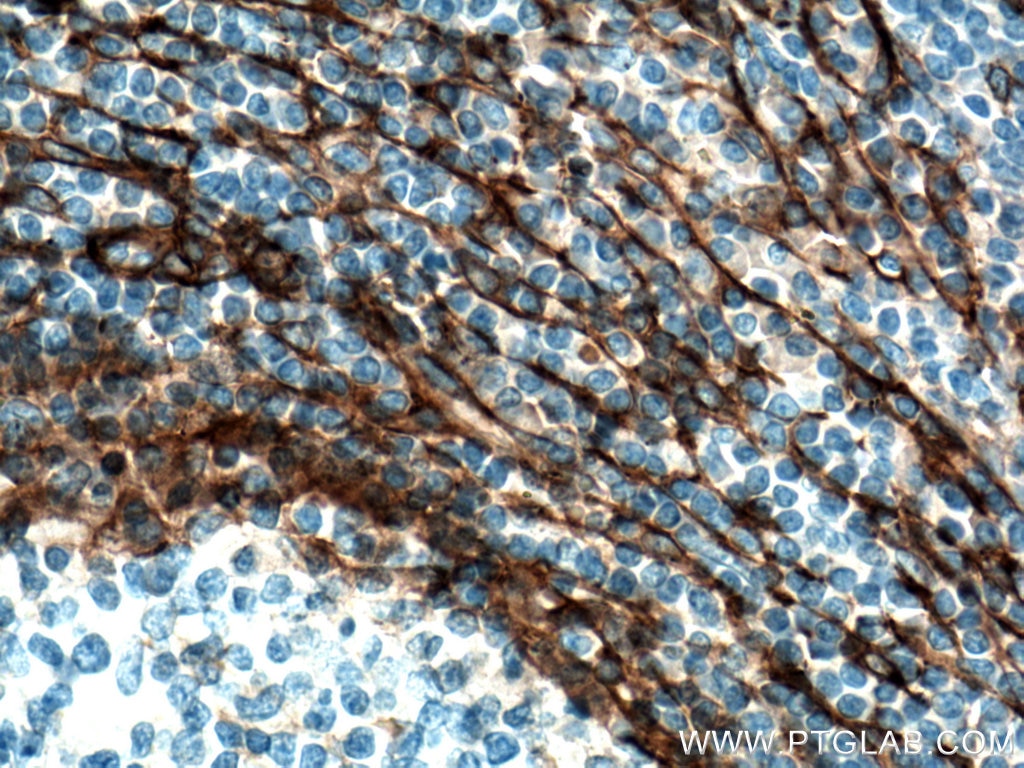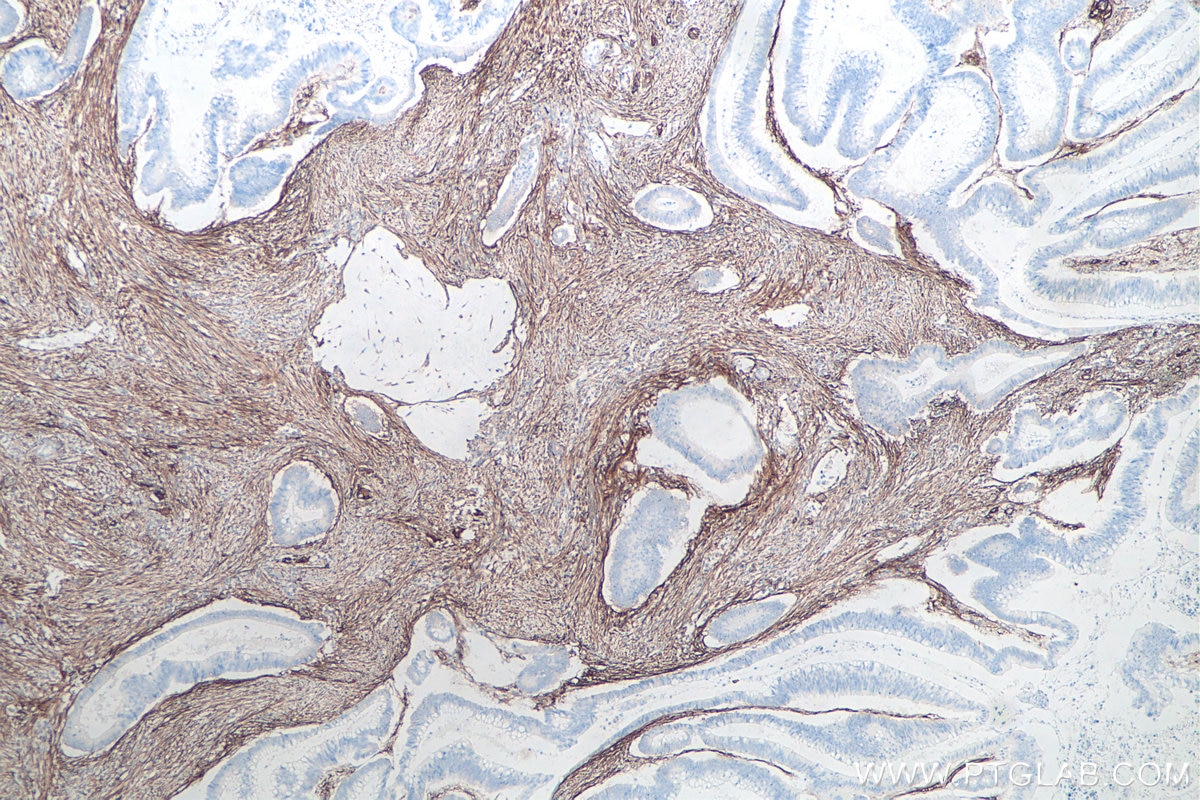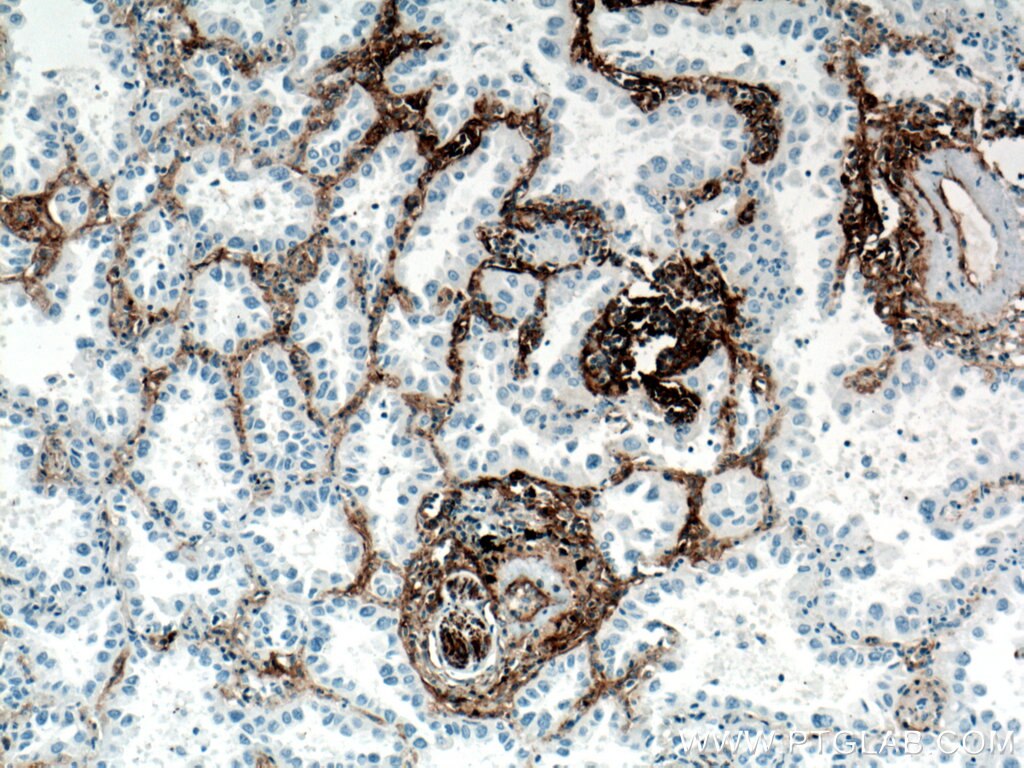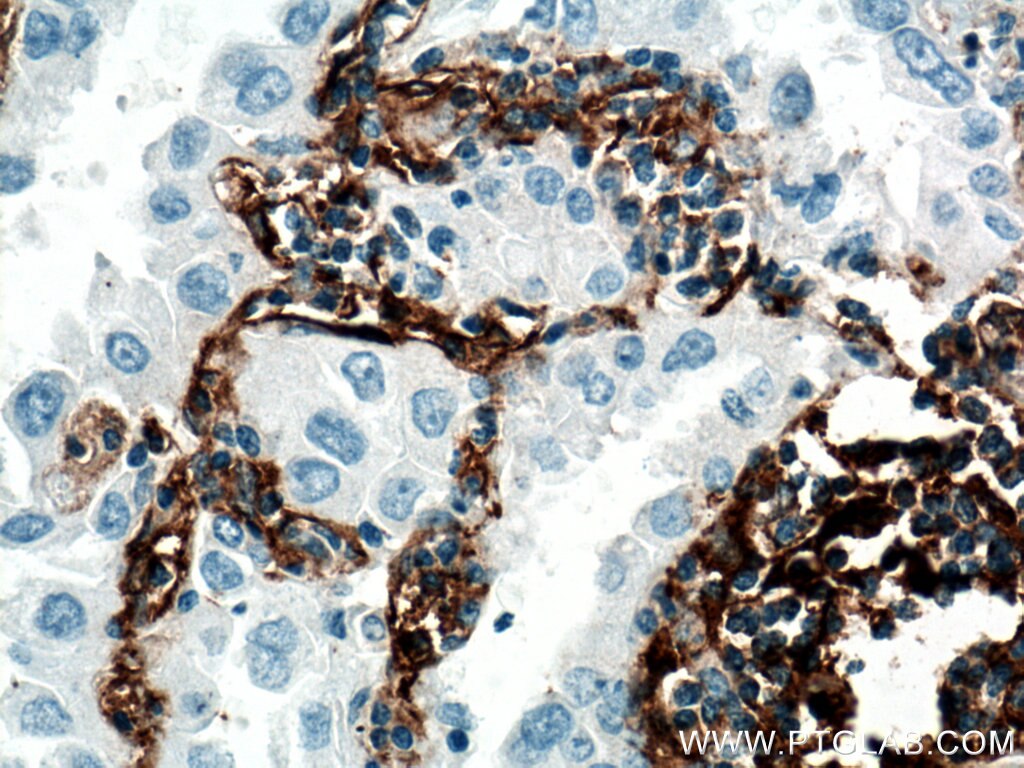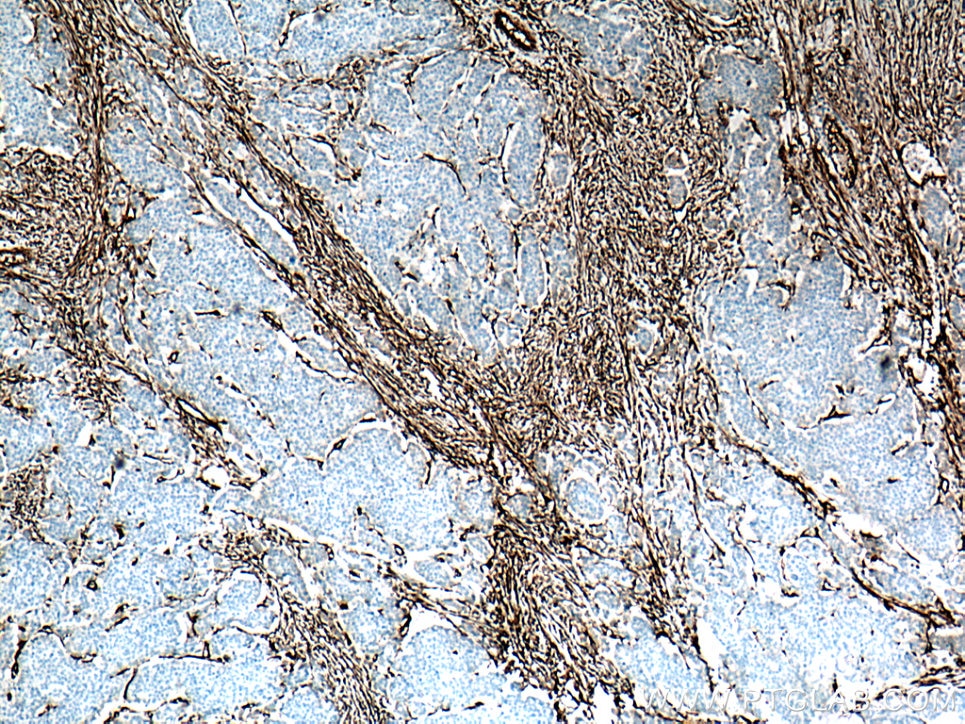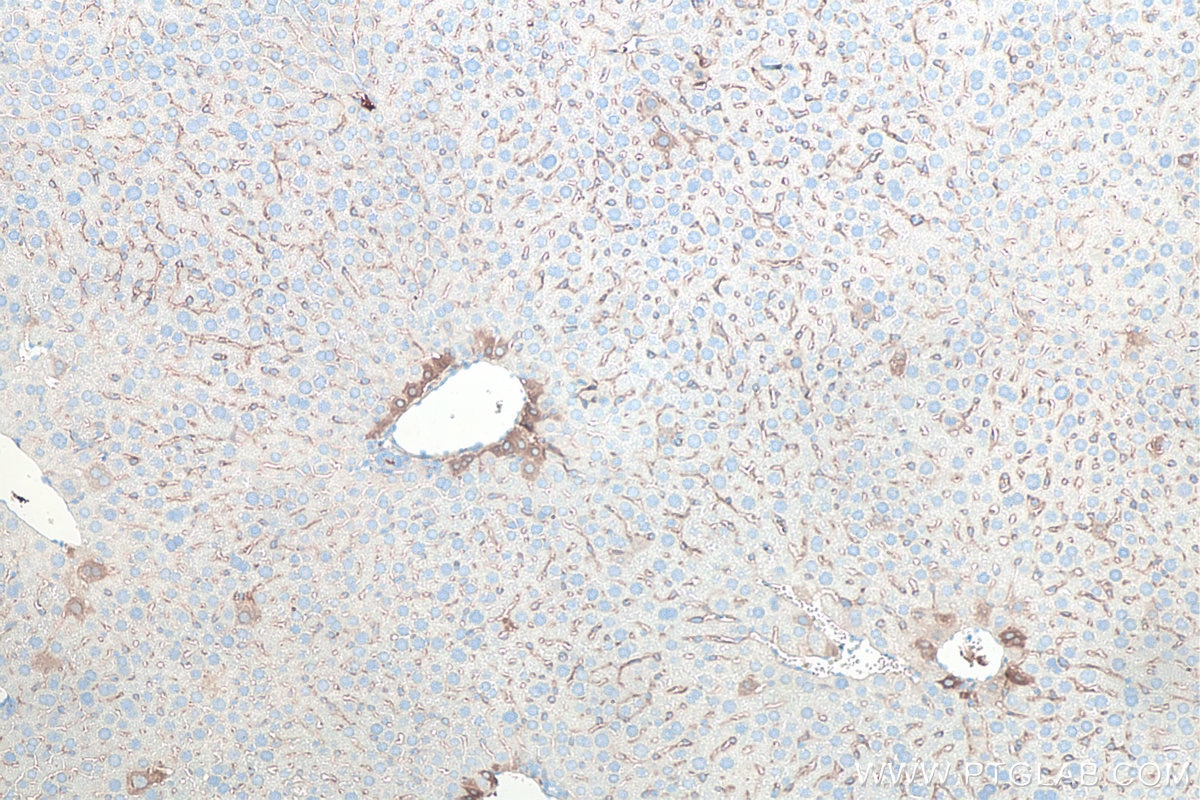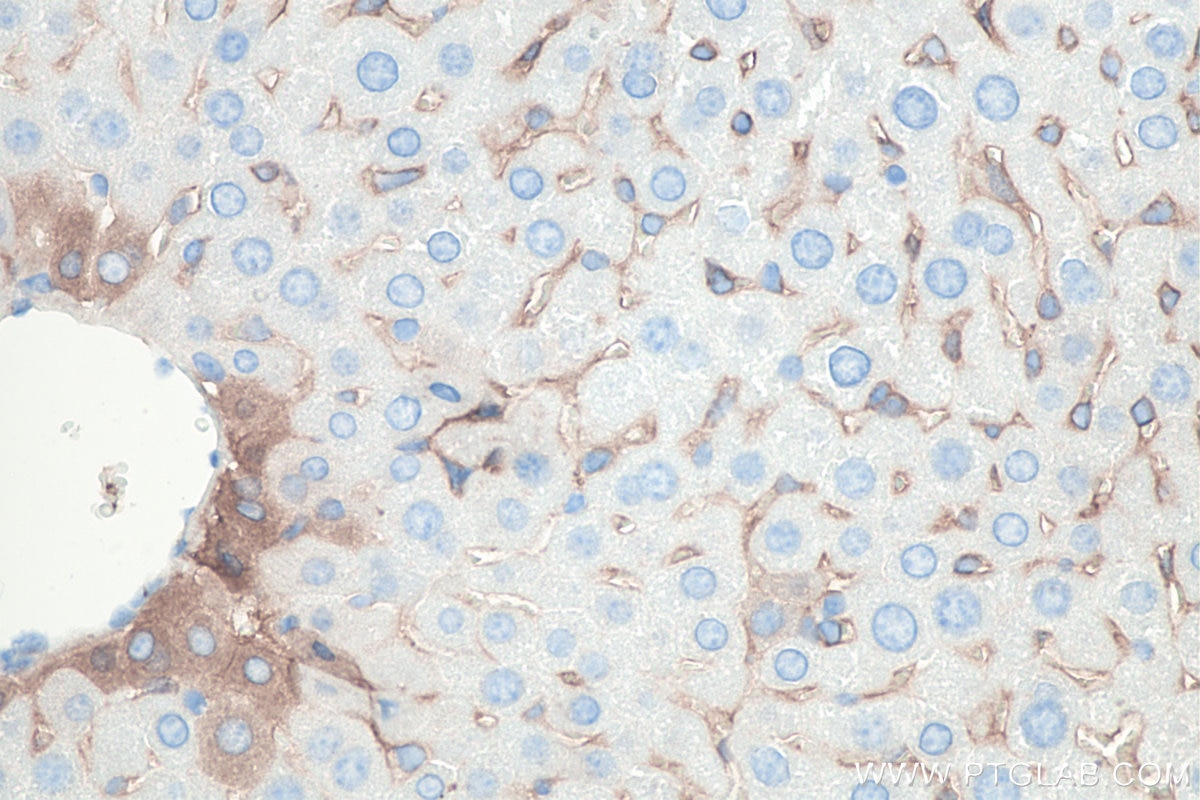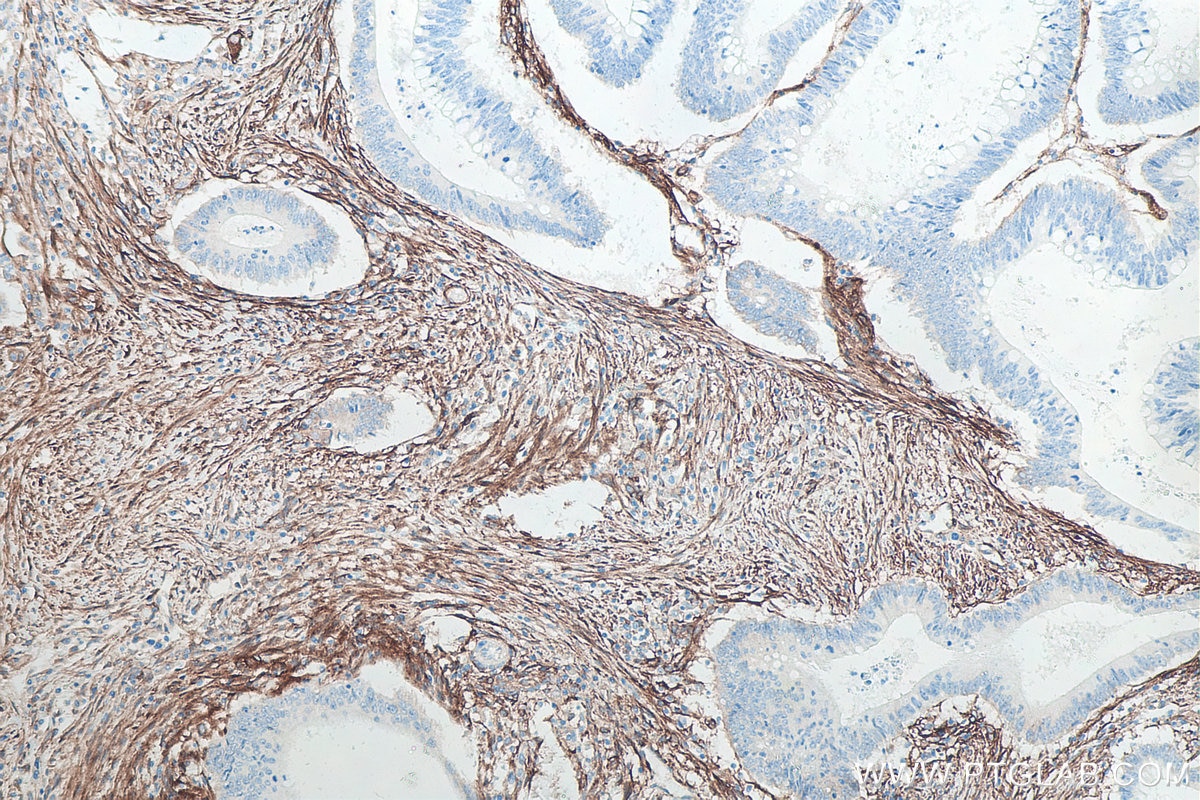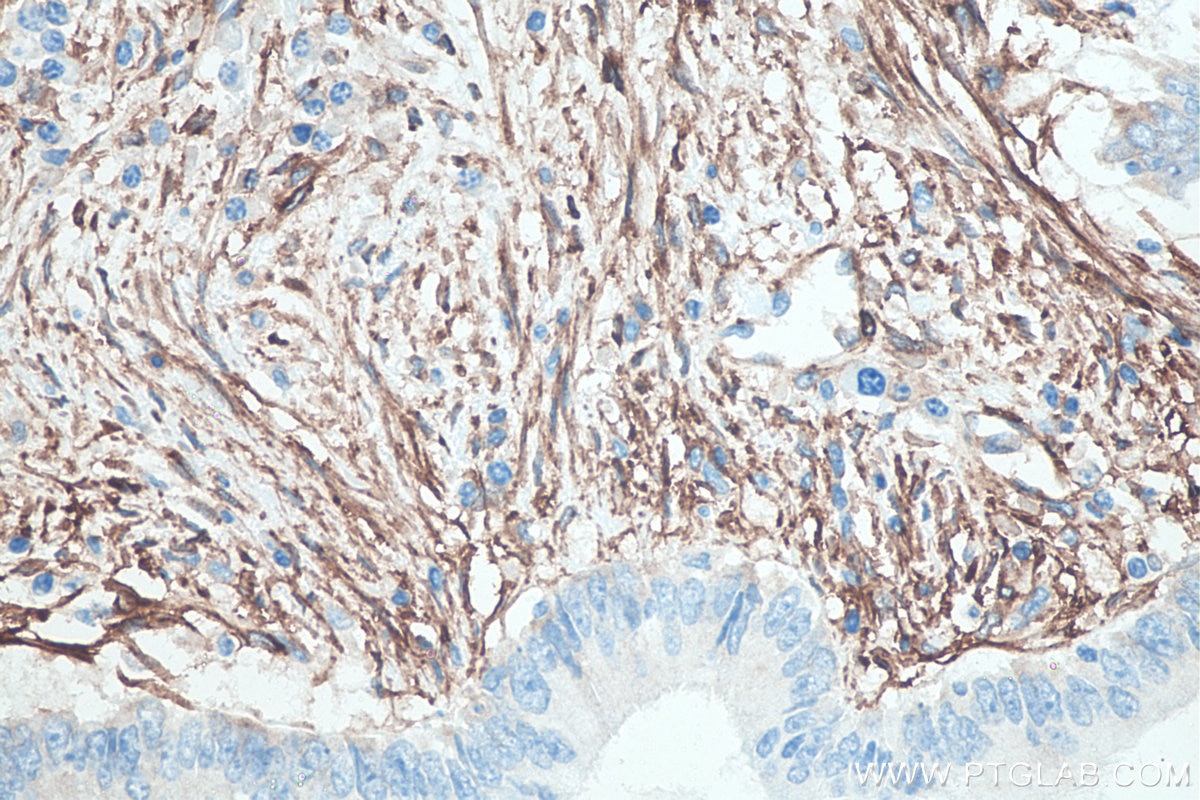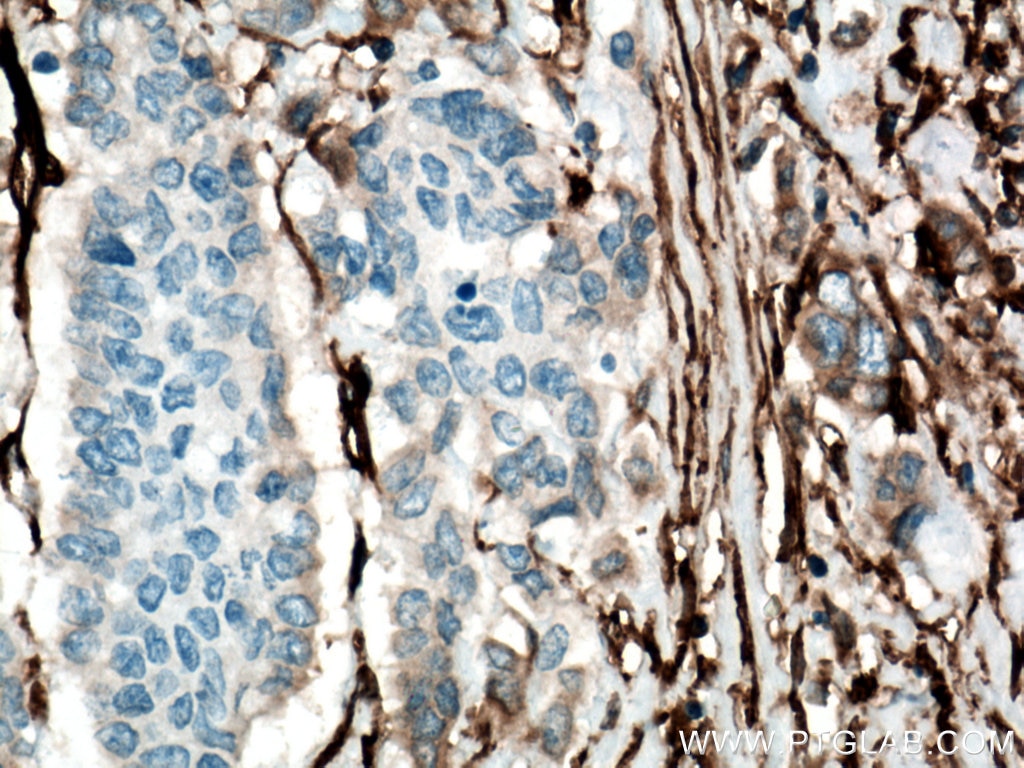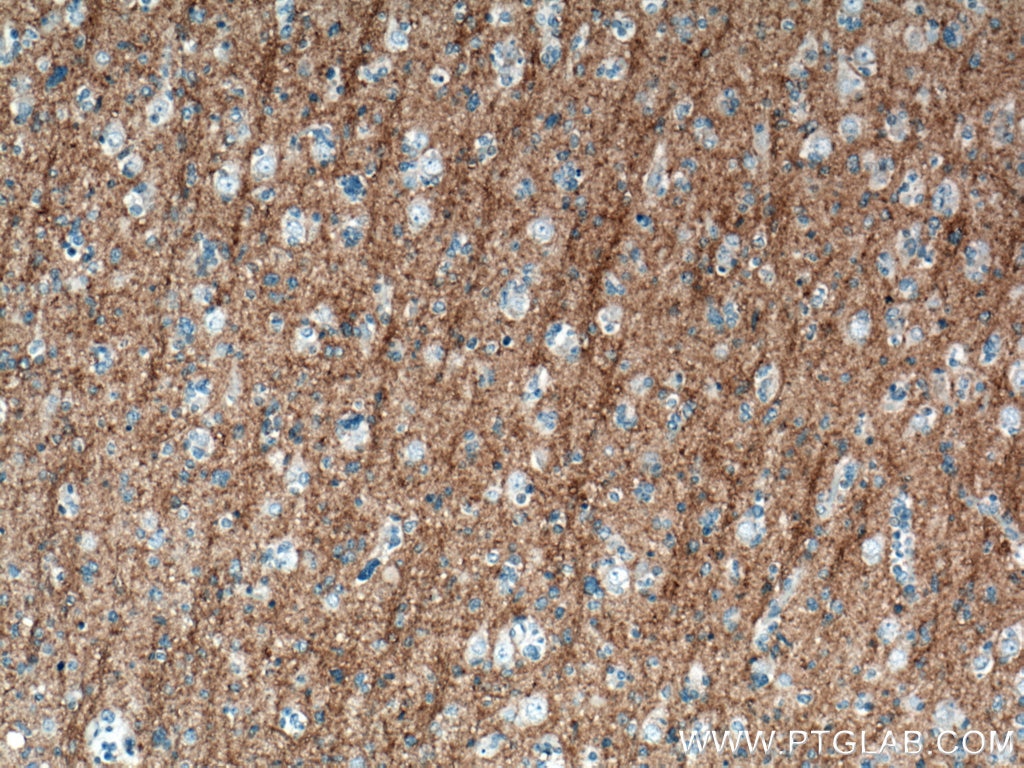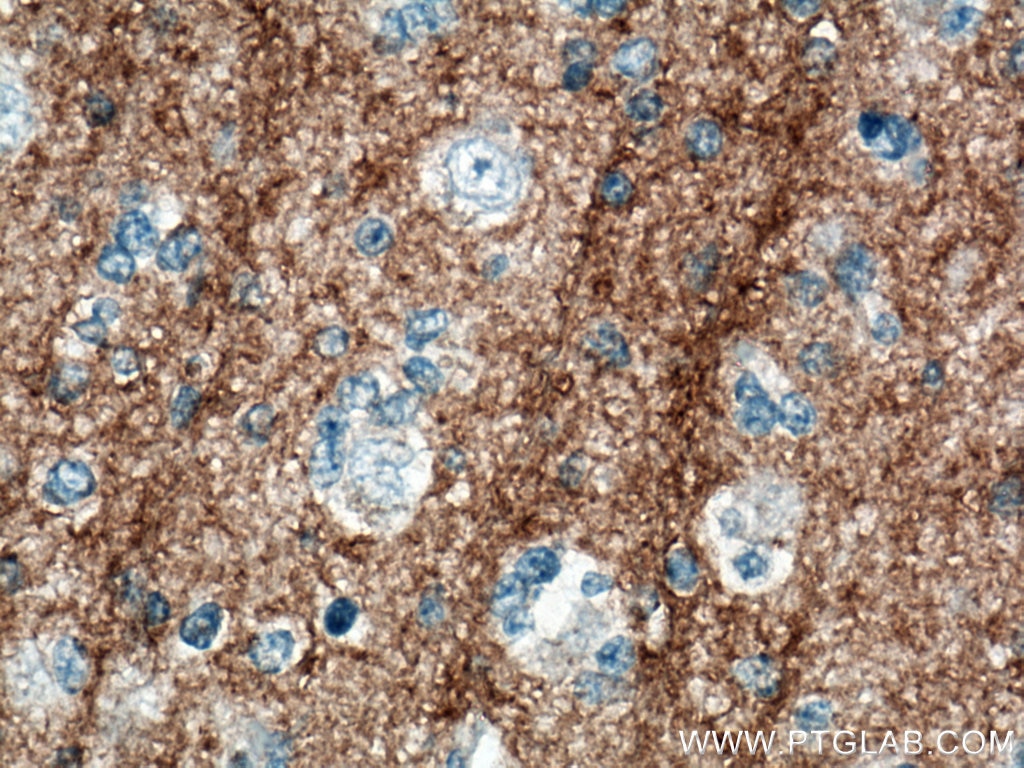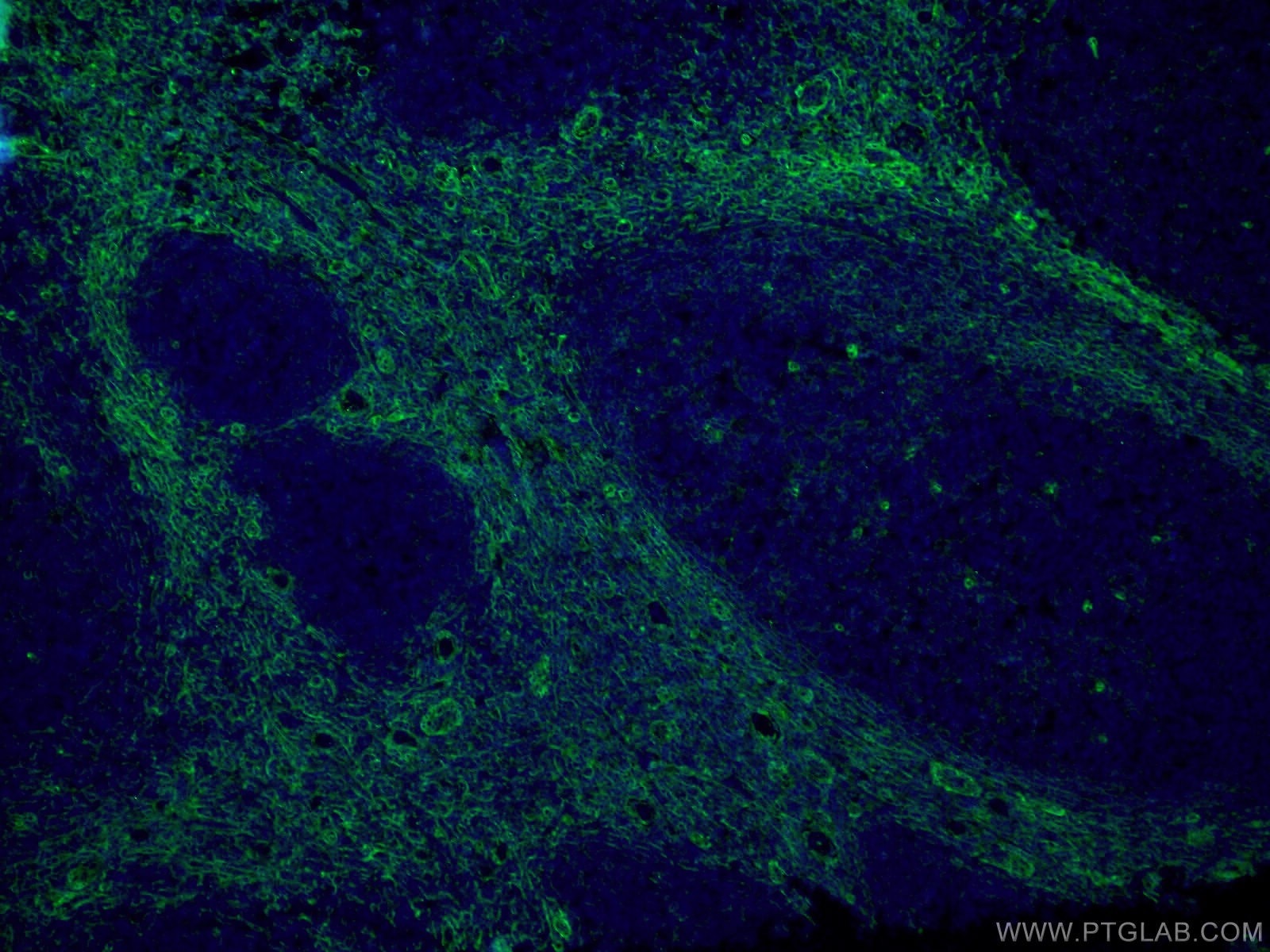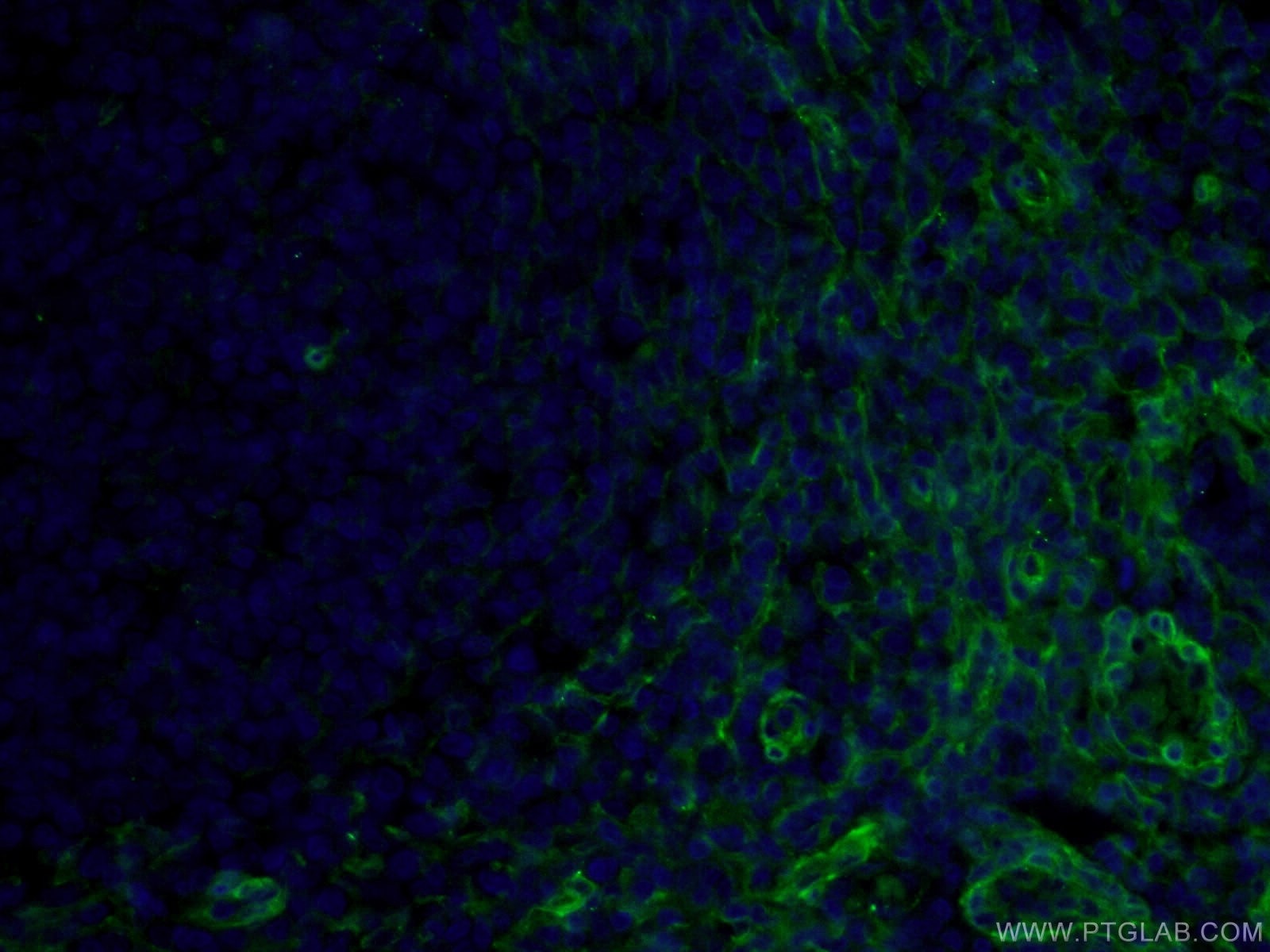CD90 Monoklonaler Antikörper
CD90 Monoklonal Antikörper für WB, IHC, IF-P, ELISA
Wirt / Isotyp
Maus / IgG2a
Getestete Reaktivität
Hausschwein, human, Kaninchen, Maus, Ratte und mehr (1)
Anwendung
WB, IHC, IF-P, ELISA
Konjugation
Unkonjugiert
CloneNo.
2D7D11
Kat-Nr. : 66766-1-Ig
Synonyme
Geprüfte Anwendungen
| Erfolgreiche Detektion in WB | fetales humanes Hirngewebe, humanes Nierengewebe, Hausschwein-Hirngewebe, Hausschwein-Kolongewebe, Hausschwein-Milzgewebe, Kaninchenhirngewebe, U2OS-Zellen |
| Erfolgreiche Detektion in IHC | humanes Tonsillitisgewebe, humanes Kolonkarzinomgewebe, humanes Gliomgewebe, humanes Lungenkarzinomgewebe, Mauslebergewebe Hinweis: Antigendemaskierung mit TE-Puffer pH 9,0 empfohlen. (*) Wahlweise kann die Antigendemaskierung auch mit Citratpuffer pH 6,0 erfolgen. |
| Erfolgreiche Detektion in IF-P | humanes Tonsillitisgewebe |
Empfohlene Verdünnung
| Anwendung | Verdünnung |
|---|---|
| Western Blot (WB) | WB : 1:2000-1:10000 |
| Immunhistochemie (IHC) | IHC : 1:500-1:2000 |
| Immunfluoreszenz (IF)-P | IF-P : 1:50-1:500 |
| It is recommended that this reagent should be titrated in each testing system to obtain optimal results. | |
| Sample-dependent, check data in validation data gallery | |
Veröffentlichte Anwendungen
| WB | See 9 publications below |
| IHC | See 5 publications below |
| IF | See 23 publications below |
| FC | See 3 publications below |
Produktinformation
66766-1-Ig bindet in WB, IHC, IF-P, ELISA CD90 und zeigt Reaktivität mit Hausschwein, human, Kaninchen, Maus, Ratten
| Getestete Reaktivität | Hausschwein, human, Kaninchen, Maus, Ratte |
| In Publikationen genannte Reaktivität | human, Hausschwein, Kaninchen, Maus, Ratte, Rind |
| Wirt / Isotyp | Maus / IgG2a |
| Klonalität | Monoklonal |
| Typ | Antikörper |
| Immunogen | CD90 fusion protein Ag25603 |
| Vollständiger Name | Thy-1 cell surface antigen |
| Berechnetes Molekulargewicht | 161 aa, 18 kDa |
| Beobachtetes Molekulargewicht | 28 kDa |
| GenBank-Zugangsnummer | BC065559 |
| Gene symbol | CD90/Thy1 |
| Gene ID (NCBI) | 7070 |
| Konjugation | Unkonjugiert |
| Form | Liquid |
| Reinigungsmethode | Protein-A-Reinigung |
| Lagerungspuffer | PBS with 0.02% sodium azide and 50% glycerol |
| Lagerungsbedingungen | Bei -20°C lagern. Nach dem Versand ein Jahr lang stabil Aliquotieren ist bei -20oC Lagerung nicht notwendig. 20ul Größen enthalten 0,1% BSA. |
Hintergrundinformationen
CD90, also known as THY1, is a 25-35 kD protein that is expressed on 1-4% of human fetal liver cells, cord blood cells, and bone marrow cells. CD90 is one of the essential surface molecules expressed on human MSC from bone marrow and other sources. Activation of Thy-1 has been reported to promote T cell activation. It also affects numerous nonimmunologic biological processes, including cellular adhesion, neurite outgrowth, tumor growth, migration, and cell death.
Protokolle
| PRODUKTSPEZIFISCHE PROTOKOLLE | |
|---|---|
| WB protocol for CD90 antibody 66766-1-Ig | Protokoll herunterladen |
| IHC protocol for CD90 antibody 66766-1-Ig | Protokoll herunterladenl |
| IF protocol for CD90 antibody 66766-1-Ig | Protokoll herunterladen |
| STANDARD-PROTOKOLLE | |
|---|---|
| Klicken Sie hier, um unsere Standardprotokolle anzuzeigen |
Publikationen
| Species | Application | Title |
|---|---|---|
Cell Mol Biol Lett Reciprocal negative feedback between Prrx1 and miR-140-3p regulates rapid chondrogenesis in the regenerating antler | ||
Int J Biol Macromol A light-cured injectable composite hydrogel based on chitosan and decellularized matrix modulates stem cell aggregation behavior for accelerating cartilage defect repair | ||
J Mol Cell Biol Cancer-associated adipocytes-derived G-CSF promotes breast cancer malignancy via Stat3 signaling. | ||
Int J Mol Sci Expression of Cancer Stem Cell Markers EpCAM and CD90 Is Correlated with Anti- and Pro-Oncogenic EphA2 Signaling in Hepatocellular Carcinoma. | ||
Inflamm Bowel Dis Stromal Cell Subsets Show Model-Dependent Changes in Experimental Colitis and Affect Epithelial Tissue Repair and Immune Cell Activation | ||
Int J Biol Sci Cancer-associated adipocytes promote the invasion and metastasis in breast cancer through LIF/CXCLs positive feedback loop. |
